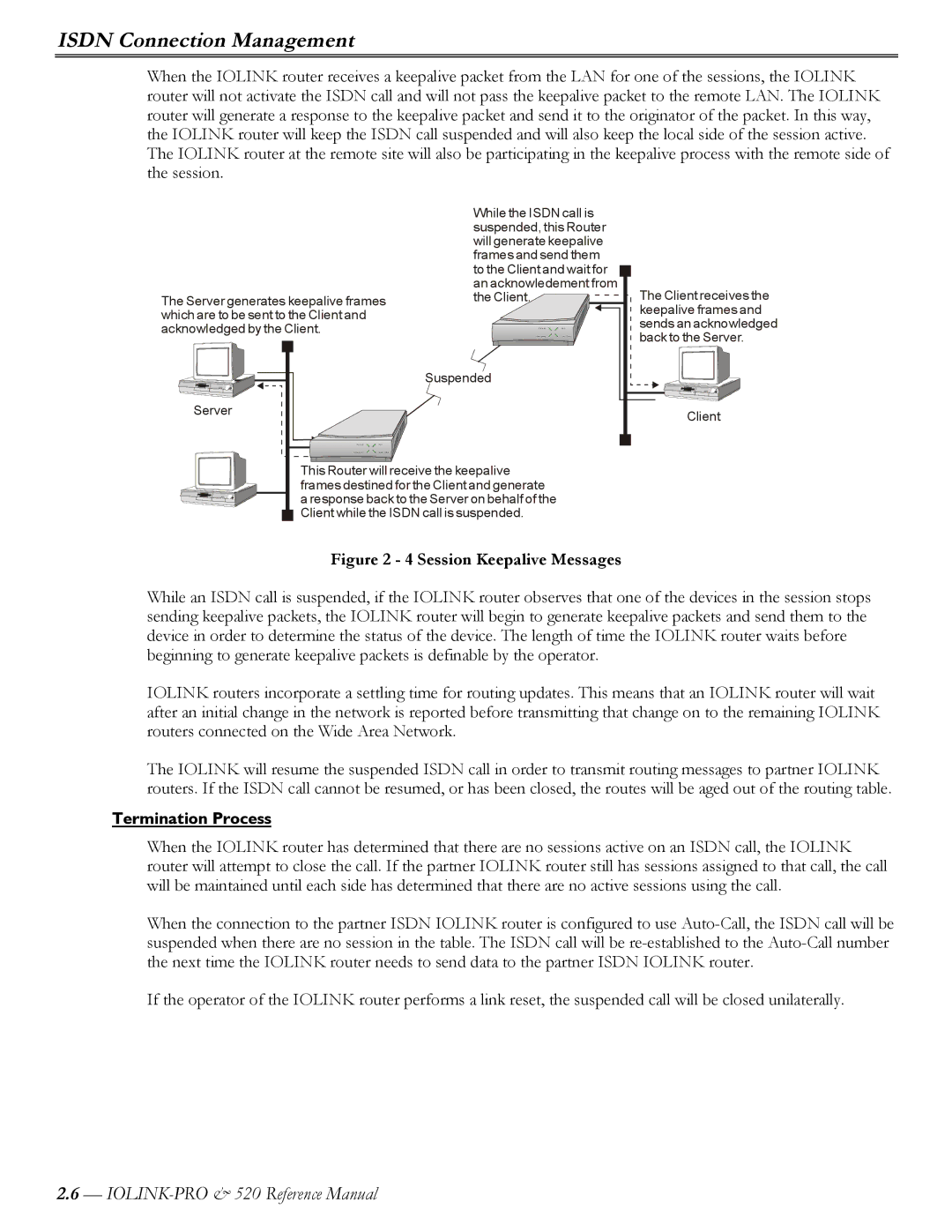
ISDN Connection Management
When the IOLINK router receives a keepalive packet from the LAN for one of the sessions, the IOLINK router will not activate the ISDN call and will not pass the keepalive packet to the remote LAN. The IOLINK router will generate a response to the keepalive packet and send it to the originator of the packet. In this way, the IOLINK router will keep the ISDN call suspended and will also keep the local side of the session active. The IOLINK router at the remote site will also be participating in the keepalive process with the remote side of the session.
The Server generates keepalive frames which are to be sent to the Client and acknowledged by the Client.
While the ISDN call is suspended, this Router will generate keepalive frames and send them to the Client and wait for an acknowledement from the Client. ![]()
![]()
![]()
![]()
![]()
The Client receives the keepalive frames and sends an acknowledged back to the Server.
Suspended
Server
This Router will receive the keepalive frames destined for the Client and generate a response back to the Server on behalf of the ![]() Client while the ISDN call is suspended.
Client while the ISDN call is suspended.
Client
Figure 2 - 4 Session Keepalive Messages
While an ISDN call is suspended, if the IOLINK router observes that one of the devices in the session stops sending keepalive packets, the IOLINK router will begin to generate keepalive packets and send them to the device in order to determine the status of the device. The length of time the IOLINK router waits before beginning to generate keepalive packets is definable by the operator.
IOLINK routers incorporate a settling time for routing updates. This means that an IOLINK router will wait after an initial change in the network is reported before transmitting that change on to the remaining IOLINK routers connected on the Wide Area Network.
The IOLINK will resume the suspended ISDN call in order to transmit routing messages to partner IOLINK routers. If the ISDN call cannot be resumed, or has been closed, the routes will be aged out of the routing table.
Termination Process
When the IOLINK router has determined that there are no sessions active on an ISDN call, the IOLINK router will attempt to close the call. If the partner IOLINK router still has sessions assigned to that call, the call will be maintained until each side has determined that there are no active sessions using the call.
When the connection to the partner ISDN IOLINK router is configured to use
If the operator of the IOLINK router performs a link reset, the suspended call will be closed unilaterally.
2.6—
